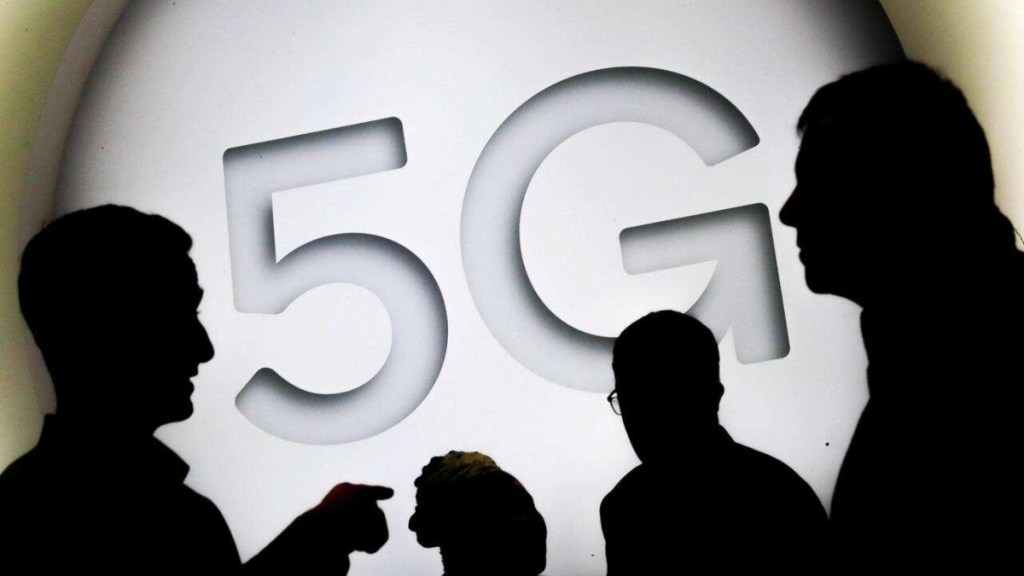By TV Ramachandran
The 6 GHz band has become a hotly-contested property between the telco operators on the one side, and, on the other side, all the weak WiFi and PM WANI operators, the cash-starved R&D units and start-ups, the low-revenue satellite operators including every Indian’s hero—ISRO—and the highly innovative group of technology players.
The Indian telcos have already been assigned 367 MHz of exclusive 5G (IMT) Spectrum in the mid-band, apart from a quantum of 3270 MHz in other bands. This is over and above another 500 MHz which is already allocated to them for 2G/3G/4G, much of which would possibly reused/refarmed as consumers start to migrate.
Nevertheless, with barely 150 million 5G subscribers (less than 15% of the total subscribers), they are most unreasonably demanding more spectrum without using what they have.
By asking for 6 GHz spectrum band to be made available to them through auction, they are cleverly trying to block innovation and competition from the non-telco group of smaller players who want the band as licence-exempt spectrum—a policy implemented by about 60 countries.
The rather amusing part of this dispute is that the licence-exempt use of 6 GHz is actually vital for telcos’ commercial success with 5G, because this new technology works on very high frequencies which can carry a lot of data but have poor propagation especially through building walls. Thus, customers will find it difficult to get a strong 5G signal inside buildings.
With 70-80% of the data traffic consumed indoors, if such consumers need adequate 5G signal for advanced apps like gaming, 4k/8k video, AR and VR, online advanced education like immersive learning, intensive interaction and advanced research, etc, then we surely need WiFi 6E or WiFi 7 that work on licence-exempt 6 GHz because the current WiFi, based on 2.4 GHz and 5 GHz, cannot handle the advanced apps.
Either Fixed Wireless Terminals can be used or the 5G signal be captured on external antennas and handed over to in-building 6 GHz WiFi. Then, customers will be able to leverage 5G effectively and have a good Quality of Experience.
Only increasing such usage will enable adequate monetisation of 5G. Otherwise, for most light- to moderate-data-using apps of normal customers, 4G is more than adequate—which is probably why we have only a small adoption of 5G despite such an extensive rollout.
It is not merely 5G that will suffer if licence-exempt 6 GHz is not made available. The next -gen 6G, for which India has ambitious development plans, is based on equally high or even higher frequency bands and the need for licence-exempt 6 GHz would be even stronger.
In fact, next-gen connectivity will rely largely not on wide area networks but on local area short range networks inside buildings and campuses. India would slip heavily in manufacturing if 6G and licence-exempt 6GHz plans are impacted.
According to a study by WIK-Consult, fibre-plus-WiFi networks are 2.5X times more energy efficient per megabyte transmitted than 5G mobile networks. As per the research, reliance in Europe on the licence exemption of only 500 MHz of the 6 GHz band instead of the full 1200 MHz will result in 16% higher energy consumption. This would lead to larger annual emissions by Europe by 2030 than what would have happened if all 1200 MHz had been exempted.
With a much larger geography and population, one can expect that the energy savings for India would be several-fold higher. We can ill afford to ignore this huge sustainability advantage from a full licence-exempt 6GHz band.
Incumbents tend to block any move for liberalisation or innovation and enhanced competition. They forget that they could never have come up to their current status if DoT, MTNL and BSNL had successfully blocked the growth of the new entrants through such tactics.
Telcos, moreover, forget that their licence, issued under Section 4 of The Indian Telegraph Act, 1885 states that the Central Government “may grant a licence, on such conditions and in consideration of such payments as it thinks fit, to any person to establish, maintain or work a telegraph within any part of India.
Their Unified Licence reiterates that it “has been granted on non-exclusive basis and additional licences may be issued in any service area from time to time in future without any restriction on number of licences with same or different entry conditions.” All players should awaken to the realities of the Digital Age.
The author is Honorary fellow at IET, London, and president of Broadband Forum of India
Views are personal.

